Why You Should Offer Multiple Tiers for Membership Site
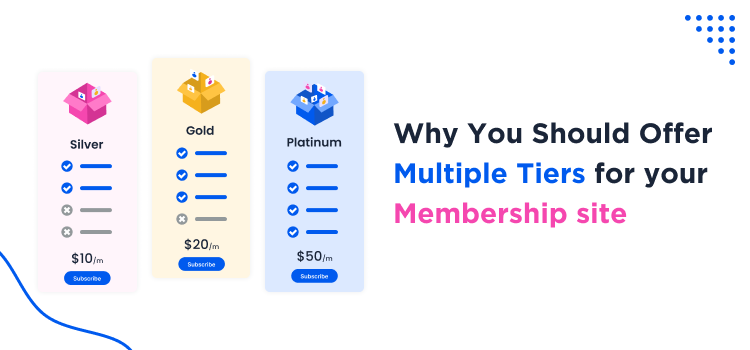
Each member stumbling on your membership site will not have a similar budget and requirements. At this point, you need to make sure that you have a plan that suits every budget and requirements. Thus, enter tiered pricing models.
Can you maximize revenue if you offer multiple tiers for your membership site pricing instead of a single one? Yes! Only if you can do that wisely in the context of your business. This means your ability to:
1) Understand the segments of your audience
2) Analyze the average amount of money your customers spend to pivot with plan pricing
3) Clearly define and differentiate between each plan offer
You need to analyze the expectations of your audience. What they are willing to pay, what kind of value they are looking for, what’s the consistency at which they require your services, and how likely they are to renew. Distribute your offers among various tiers and monetize your membership business smartly.
Well, you don’t have to scratch your heads anymore. This blog addresses this question and provides you with well-rounded solutions.
Why Create Multiple Tiers for Your Membership
In the diverse internet world, using multiple price points can be the only way to target different customer segments with varying budgets and needs.
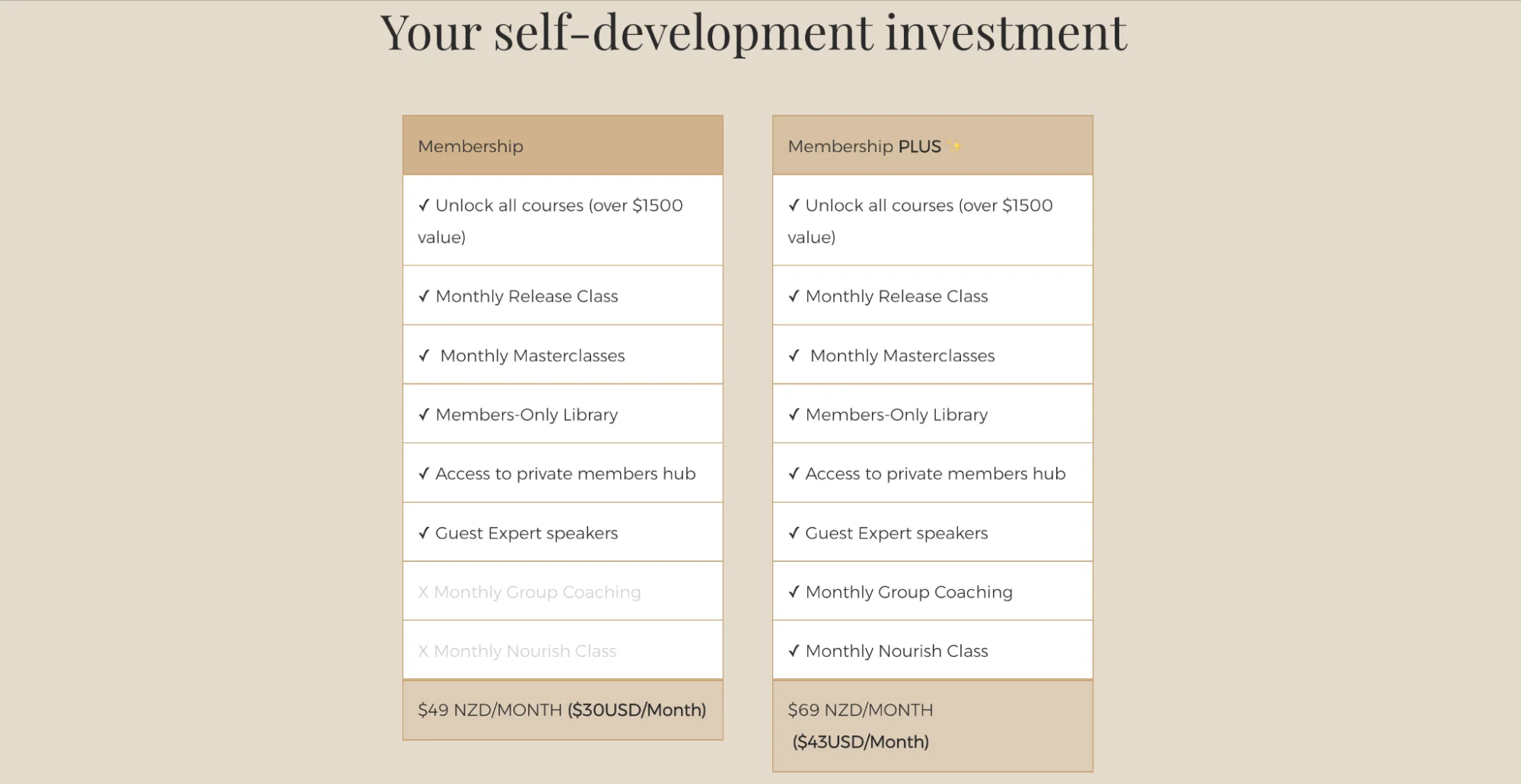
You must be thinking if you should invest all this time and energy to plan different tiers and offers. Well, these benefits might help you make up your mind.
- More flexibility and tailor-made experiences: This method provides you with the flexibility to cater to audiences of each economic segment. Like this, your business would have something for everyone. Win satisfaction of customers by such tailor-made experiences.
- Better discounts and marketing activities: When you market multiple plans side by side and offer discounts on the higher tier, the chances of the purchase of a higher tier increase. When you lay down a side-by-side comparison of features and prices, it attracts people more. Create limited edition premium plans and experiment with what prices work the best for selling.
- Reduced churns and build better loyalty: When you create pocket-friendly plans, the chances of regular renewal increase. Further, when a plan has a cheaper option, the audience would opt for the cheaper one instead of not purchasing at all. Thus, building a loyal audience and reducing churns.
- Better revenue expectations: Different membership plans mean diversified sources of revenue. You will have high-paying and low-paying members, both. Thus, you keep getting multiple points of earning.
- Better membership longevity: With this, you are bound to create a sustainable membership business. With all kinds of customers and multiple plans giving you revenue, the longevity of your brand will automatically increase. With more flexibility, comes more people, more revenue, and a successfully running business.
How to Differentiate Value Propositions
Now comes the main part. Differentiating between the value proposition and setting up competitive prices. You might have to opt for various A/B testing methods to fix a specific model.
Let’s think of the major question. How to price and tier your membership plans? It totally depends on what your business offers and who is your target audience. Audience analysis is very important for this.
However, let us discuss some prominent fundamentals that work for various businesses. Take a pen and paper and start jotting down the specifics relatable to your business.
Duration
Create plans based on how long the content is available or how many lessons a client requires to reach their goals. You can also offer monthly plans instead of yearly plans. This will let the users get a better idea of what you offer. If their experience is good, the chances of upgrading a plan increase.
Amount of content
You may create membership plans simply based on how much premium content a member can access, for example, more well-researched content or business insights can be limited in cheaper plans. You can also specify a specific number. For getting 3 bonus content per month, for 5 pieces of exclusive content, or 10 pieces. This will clearly define your offer.
Specific features
If you are providing various features like a social community, news forum, discussion portal, monthly quizzes, and the like, your plans can be around that. The cheaper plans provide the content but not access to premium features. Access to interactive elements (quizzes, games, achievements), communication with other members within a membership, downloading materials, etc can be reserved for high-paying members.
Bridging the gap to reality… let’s take a look at a few awesome membership sites we’ve reviewed in the past.
For example, a membership business dealing with Golf tutoring offers packaged coaching lessons based on the area of a game an individual wants to improve and differentiate membership plans by the duration of coaching offered:
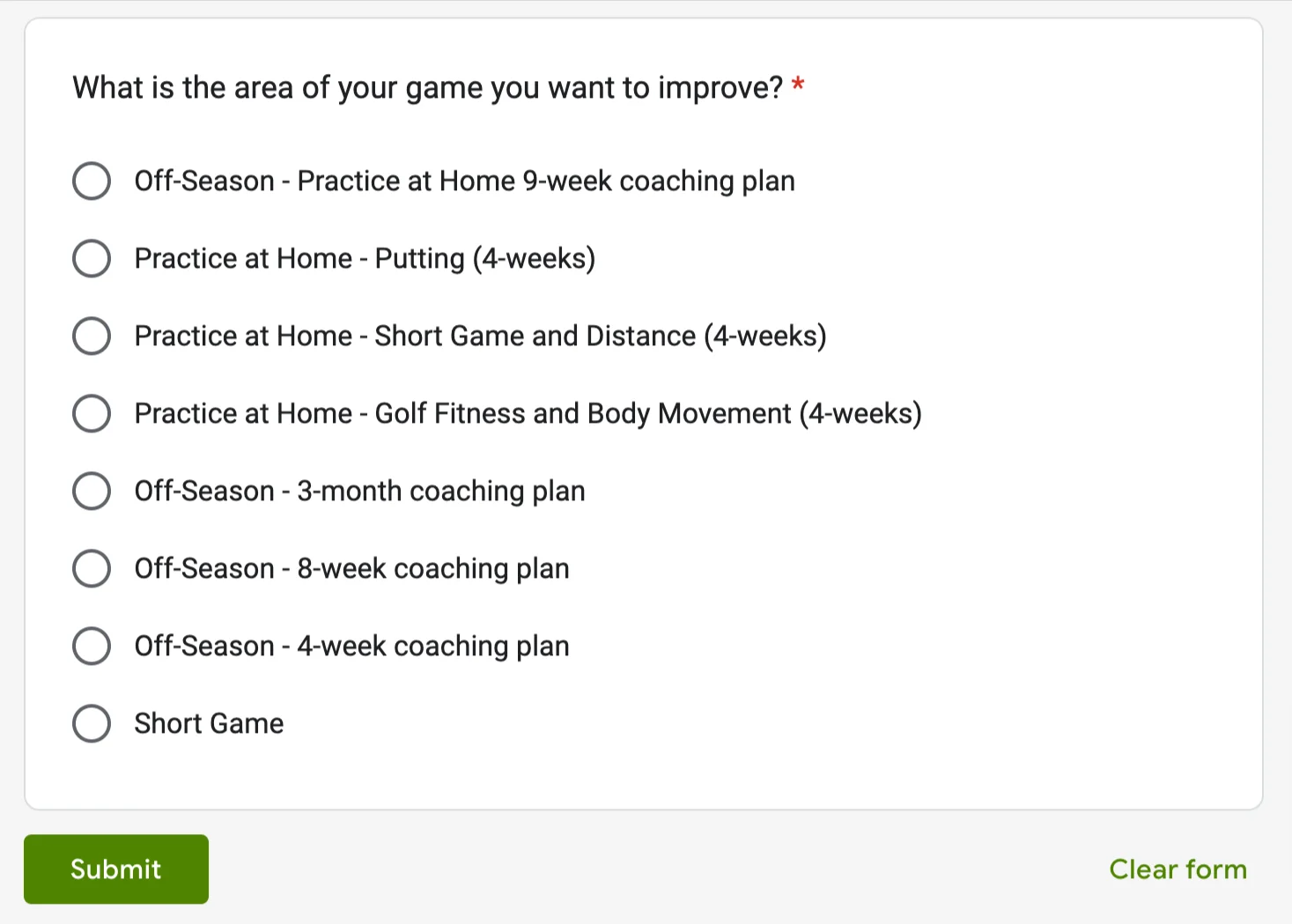
In the case of a beauty expert, for example, the more crucial value proposition would be the inclusion of an expert consultation and the assessment process of results.
When you want to help others build a business in any area, your membership options can focus on the target user role and their current stage of development:
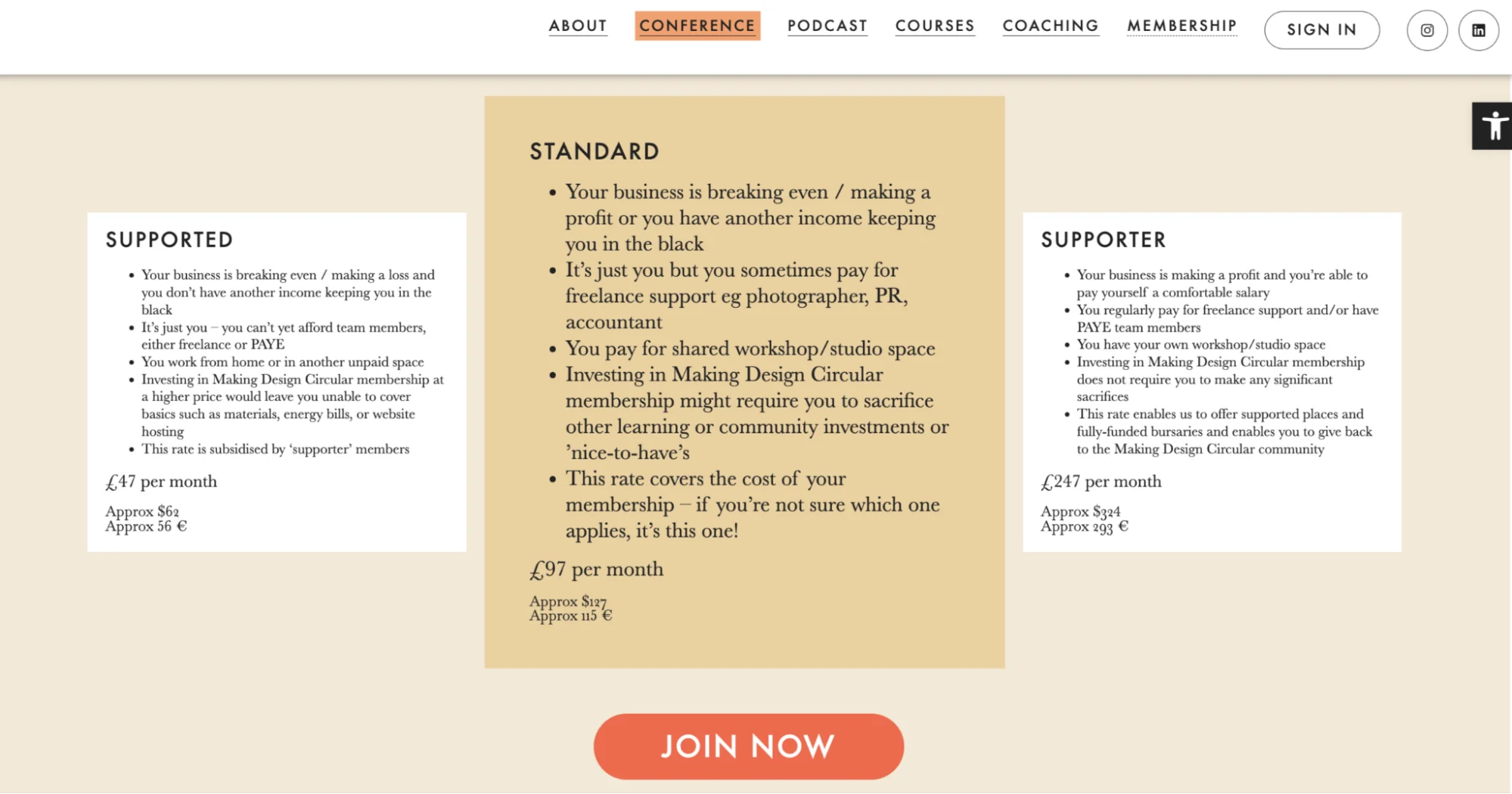
What Features Are Expected in More High-Paying Plans?
Moving on, how can we determine which customer segment is most likely to pay more for specific features? And what are these exact features of a membership?
Personal assistance
Quite often, engaging your personal or your team’s assistance is a paid feature, which can come only in higher-tier plans.
Access to merch, closed discussions, or decision-making
Many media websites that provide memberships offer such things as branded goods or access to direct communication with the editorial team, thus, increasing the customer’s influence on the future content creation processes.
Beta testing
Give members first-hand exclusive access to your products or services in beta mode.
Once you’ve identified your customer segments (what type of pain point they have or their current starting point), it will be easier for you to tailor your membership features and pricing to their specific needs and preferences.
How Should Membership Plan Tiers Be Presented
Advertising your plans effectively starts with how your pricing plans actually look and what values they communicate.
Long or short lists of features?
The benefit of shorter lists is clarity. Your ability to highlight the most valuable proposition in a plan might be a key factor in influencing the decision-making moment of your prospect.
At the same time, especially with many features that differ, you can create bigger comparison tables that are hidden by default but open when clicked. Many popular brands with multiple features do so. This will serve clients who do more careful research./
Get creative with tier names
Get creative with naming your membership tiers, let them reflect the essence and authenticity of your membership. The same applies to call-to-action buttons.
Add popularity indicators
You may mark chosen plans as ‘best-selling’ or ‘top choice of the year’ to get more traction on those plans.
Show benefits instead of features
When you highlight the real-life benefits of membership plans instead of features (which might say nothing to members), you increase your chances to sell plans.
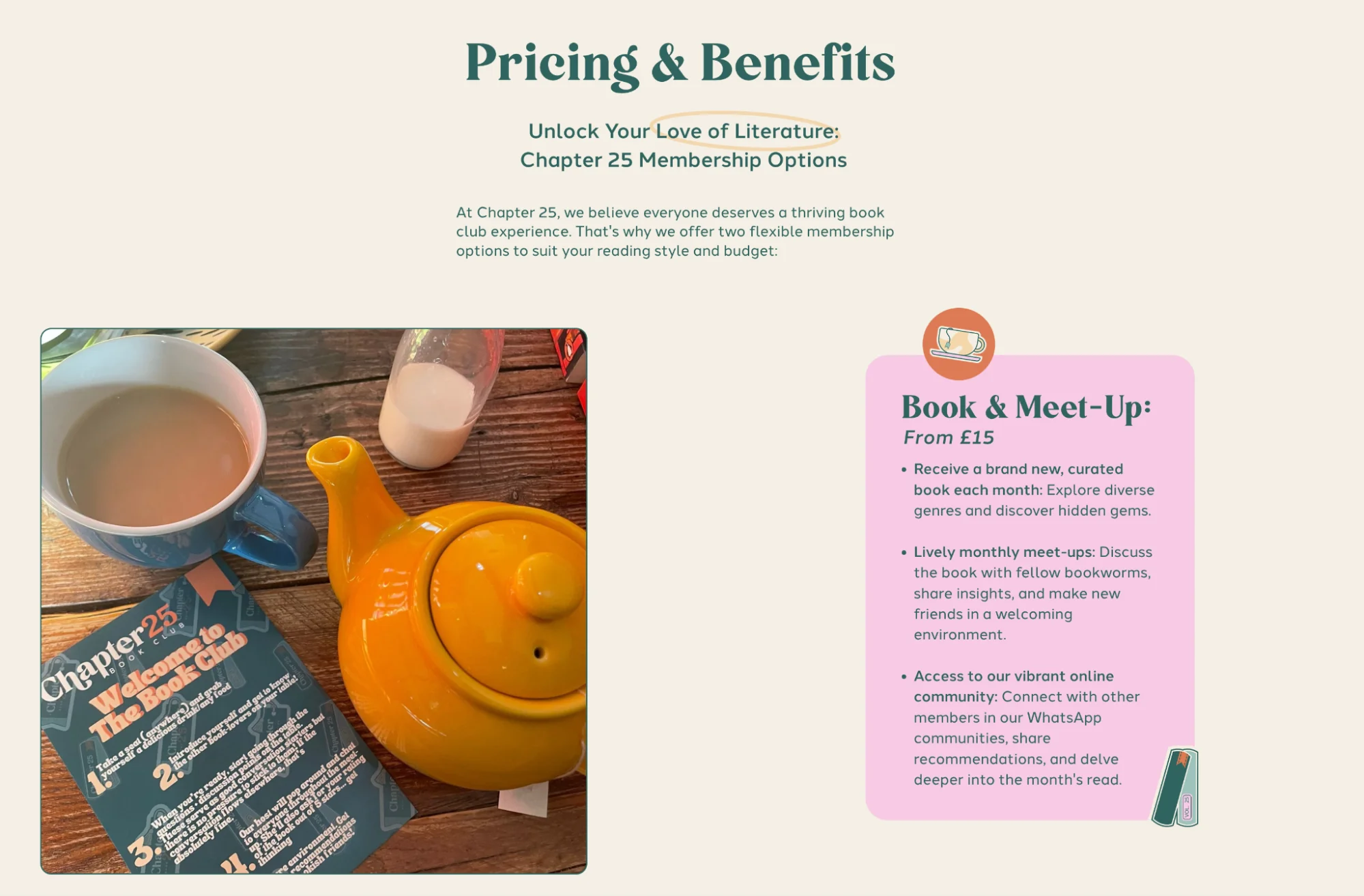
Perfectly describe the customer persona
Include the ‘this plan is best for’ part to help clients instantly identify themselves with the plans and pick the best choice without overthinking.
What to Expect – Understanding the Psychology of Clients
You’ve most likely seen three plans rather often, and, to be honest, we also find a happy medium solution for the vast cases. But you need to decide for yourself.
Too many tiers is basically putting a confusion burden and even fear on your members, known as a cognitive dissonance.
Here is something more to understand about offering multiple pricing options for digital content products.
More precisely, a few psychological factors play a role:
- Reference point: The highest-priced tier will be used as a reference point by your customer, making lower-priced options feel like better options.
- Relative value: Between very cheap and very expensive, people think the more expensive one is a better deal.
- Fear of loss: Customers may be more motivated to avoid a loss than to gain a profit, leaning towards a higher-priced option if that will save them money.
Conclusion & Final Tips
While creating just one membership plan might be a suitable option for some projects, it can become a real handicap for the development of many businesses where a tailored customer approach is a must. So, multiple-tiered membership plans offer several advantages over a single plan.
Since the topic is huge, we are offering you to have a look at a few further tips that can be helpful:
- Assess how your plans perform and be ready to change their price or feature pack.
- Identify the pain points and starting points of your customers to properly segment them.
- Too many tiers potentially jeopardize your sales since they may cause cognitive dissonance in customers.
More insightful articles:
- 5 Staggering Benefits of Creating and Running a Membership Site
- 7 Ways to Increase Member Retention for Membership Sites
- Best FOMO Marketing Strategies to Boost Your Membership Site
To learn more about scaling your membership business effectively, check out our guide on How To Grow Your Business With a Membership Website.


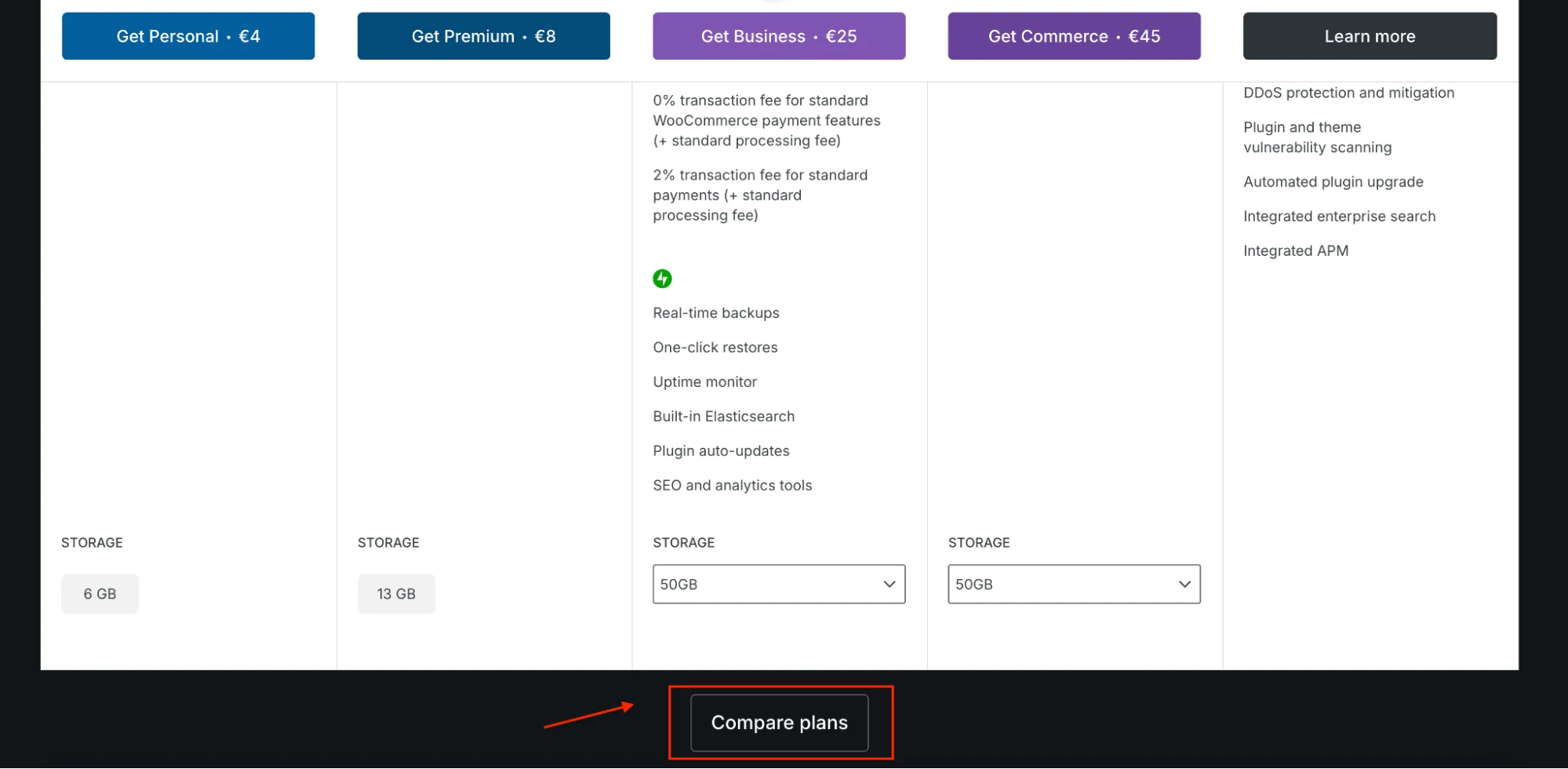


Leave a Reply
You must be logged in to post a comment.